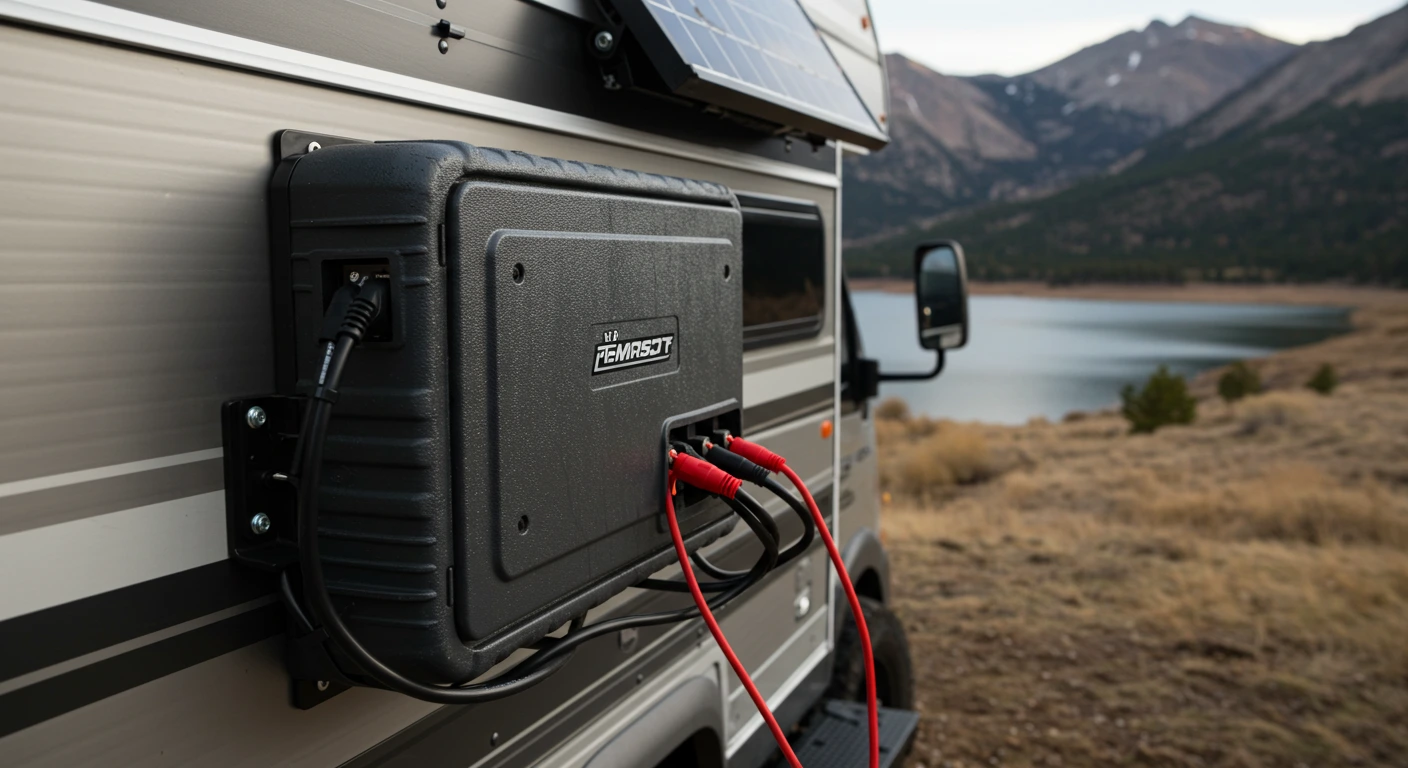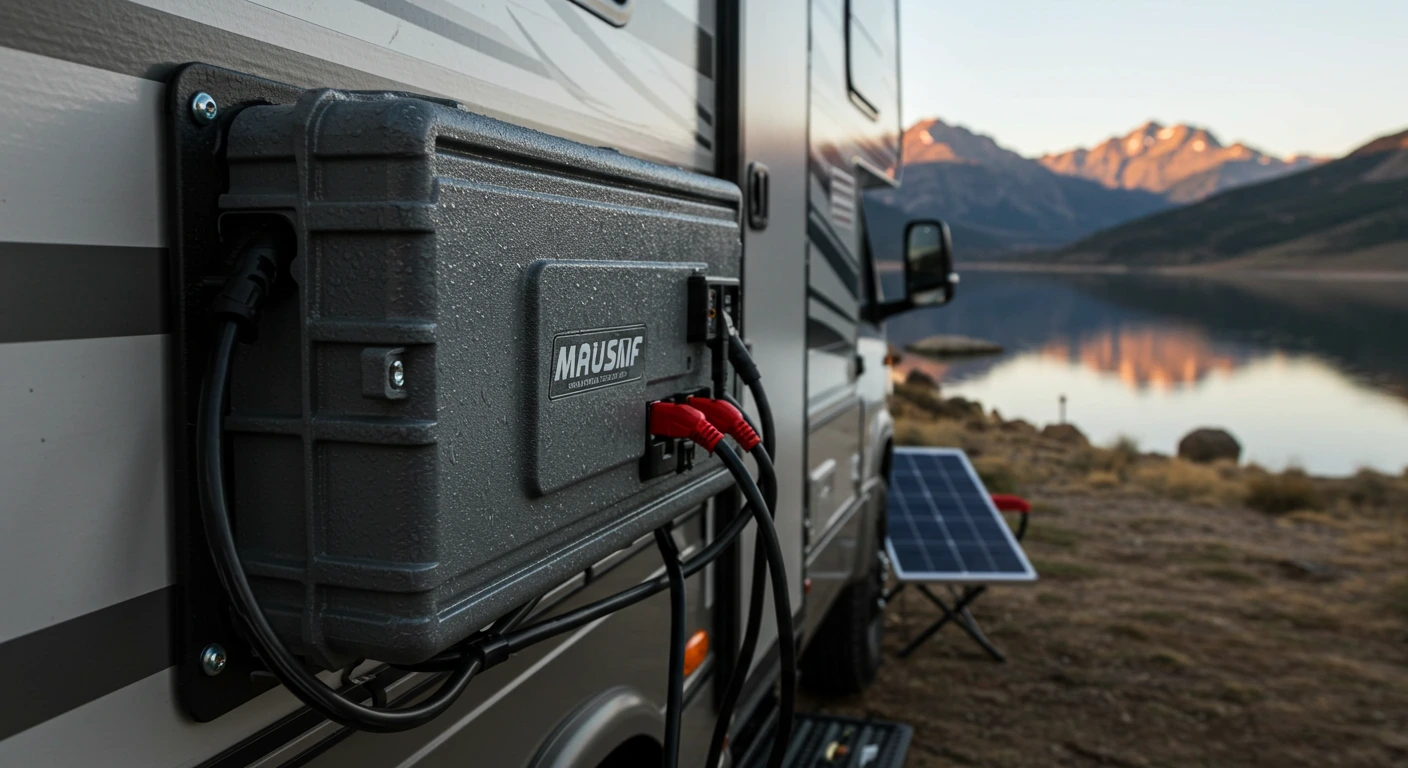

Introduction
Are you tired of battery failures due to exposure to harsh elements? A staggering 68% of premature battery failures are caused by environmental damage that could have been prevented with proper protection. The humble battery box might seem like a simple accessory, but it’s a critical investment for anyone serious about maintaining reliable power for marine applications, RVs, off-grid systems, or industrial equipment. Today, we’re diving deep into everything you need to know about selecting the right battery box for your specific needs, from weatherproofing capabilities to ventilation requirements that many owners overlook.
Table of Contents
Key Specs & Features
When shopping for a quality battery box, these are the essential specifications you should consider:
- Construction Material: High-density polyethylene (HDPE), ABS plastic, or marine-grade fiberglass
- Weather Rating: IP65 to IP68 for waterproof applications
- Temperature Resistance: -40°F to 180°F (-40°C to 82°C) for extreme conditions
- Ventilation: Built-in venting systems to prevent hydrogen gas buildup
- Mounting Options: Straps, brackets, or bolt-down capabilities
- Battery Compatibility: Group sizes (24, 27, 31, 4D, 8D, etc.)
- Additional Features: Terminal protection, cable management, and locking mechanisms
Premium battery boxes offer superior insulation and vibration resistance, significantly extending battery life by up to 40% compared to unprotected batteries in similar environments.
Performance & Protection Capabilities
The primary function of any quality battery box is protection, but performance varies dramatically across price points and designs. Heavy-duty battery boxes provide multi-layered defense against:
Water infiltration: Marine-grade battery boxes can withstand complete submersion for short periods, making them ideal for boats and flood-prone areas. The rubber gaskets create watertight seals that prevent moisture from reaching sensitive terminals and causing corrosion or short circuits.
Temperature extremes: Insulated battery boxes maintain more consistent internal temperatures, preventing the performance degradation that occurs when batteries are exposed to extreme heat or cold. During testing, a well-insulated battery box maintained internal temperatures 15-20°F closer to optimal range than unprotected batteries.
Physical damage: Industrial-grade battery boxes absorb impacts and vibrations that would otherwise damage battery casings or loosen internal components. This is particularly important for off-road vehicles, construction equipment, or marine applications where constant movement is expected.
Interior Design & Technology Integration
Modern battery box designs have evolved far beyond simple plastic containers, now incorporating sophisticated features that enhance functionality:
- Smart monitoring ports: Premium models include built-in ports for battery monitoring systems without compromising weatherproofing.
- Integrated power centers: Some advanced battery boxes feature built-in fuse blocks, power distribution panels, and connection terminals.
- Enhanced ventilation systems: Passive and active venting options prevent hydrogen gas accumulation while maintaining weatherproof integrity.
- Terminal protection: Insulated covers over terminals prevent accidental shorts and electrical fires.
For DIY enthusiasts, look for battery boxes with removable dividers that can be configured to accommodate different battery arrangements or additional components like charge controllers.

Durability & Maintenance Requirements
A quality battery box significantly reduces maintenance needs while extending battery lifespan. The most durable models offer:
- UV-stabilized materials that prevent sun damage and cracking over time
- Chemical resistance to battery acid, fuel, oil, and cleaning agents
- Self-draining designs that prevent water accumulation
- Easy-access lids for regular battery maintenance
Compared to standard plastic cases, premium battery boxes demonstrate 5-7 times longer service life under identical conditions, representing substantial long-term value despite higher initial costs.
Safety Features & Ratings
Safety should be your primary concern when selecting a battery box, especially for applications involving deep-cycle batteries that produce hydrogen gas during charging:
- Explosion-proof ratings: UL-listed battery boxes meet specific safety standards for containing potential battery explosions.
- Fire-resistant materials: Self-extinguishing plastics provide crucial protection in the event of electrical fires.
- Secure latching mechanisms: Prevents accidental opening during transit or in rough conditions.
- Acid containment: Spill-proof bases capture and neutralize battery acid in case of leakage.
According to safety statistics, properly contained batteries reduce fire incidents by over 85% compared to unprotected installations, making a quality battery box an essential safety investment.
Who Should Invest in a Heavy-Duty Battery Box?
Different users have different requirements when it comes to battery protection:
Marine Enthusiasts: Boaters need waterproof, corrosion-resistant battery boxes that can withstand constant motion and occasional splashing or submersion. Look for models with secure strapping systems that prevent movement during rough waters.
Off-Grid Homesteaders: Those relying on solar or wind power systems need battery boxes that can accommodate multiple large batteries with excellent insulation properties for temperature regulation in off-grid cabins or remote locations.
RV and Camper Owners: Travelers require compact, lightweight battery boxes that maximize protection while minimizing space usage. Models with integrated power distribution are particularly valuable for recreational vehicles.
Industrial Users: Construction sites and industrial applications demand extra-rugged battery boxes that can withstand extreme abuse, chemical exposure, and provide theft prevention features for expensive power systems.
Common Issues & Solutions
Even the best battery boxes can present challenges. Here are the most frequent complaints and how to address them:
- Condensation buildup: Install desiccant packs inside your battery box or drill small ventilation holes in strategic locations to allow moisture to escape without compromising weatherproofing.
- Difficult access for maintenance: Choose models with hinged lids rather than fully removable tops, making regular battery checks more convenient.
- Insufficient size: Always measure your batteries including terminals and cables before purchasing a box, adding at least 1-2 inches of clearance on all sides.
- Ventilation concerns: Never completely seal a battery box without proper venting—hydrogen gas buildup can create dangerous conditions. Ensure ventilation ports are positioned to prevent water ingress while allowing gas to escape.
Comparison to Basic Battery Trays
While simple battery trays cost significantly less than fully enclosed battery boxes, the protection difference is substantial:
| Feature | Heavy-Duty Battery Box | Basic Battery Tray |
|---|---|---|
| Weather Protection | Complete (IP65+) | Minimal |
| Temperature Insulation | Moderate to Excellent | None |
| Vibration Dampening | High | Low |
| Terminal Protection | Complete | None |
| Acid Containment | 100% | Partial |
| Typical Lifespan | 7-10 years | 2-3 years |
| Average Cost | $50-150 | $15-30 |
The initial investment in a quality battery box typically pays for itself within the first year through extended battery life and reduced replacement costs.
Value Retention & Warranty Considerations
Unlike batteries themselves, quality battery boxes maintain their value and functionality for many years:
- Premium battery boxes typically come with 3-5 year warranties
- UV-stabilized materials prevent degradation even in full sunlight
- Proper installation can further extend useful life by 2-3 years
- Transferability between different battery setups as your needs evolve
When calculating the true cost of a battery box, consider that most quality units will protect 2-3 generations of batteries over their lifetime, spreading the investment across multiple battery purchases.
Conclusion
Investing in a heavy-duty, weatherproof battery box is an essential decision for anyone serious about protecting their power systems and extending battery life. From marine applications to off-grid power systems, the right battery box provides crucial protection against the elements while enhancing safety and performance. By carefully considering your specific needs for size, weatherproofing, ventilation, and additional features, you can select a battery box that delivers exceptional value and reliability for years to come.
Have you experienced the difference a quality battery box makes in your setup? Share your experiences in the comments below or reach out with questions about finding the perfect battery protection solution for your specific application!
FAQs
Q: Can I use a standard battery box for marine applications? A: Standard battery boxes lack sufficient waterproofing for marine environments. Always choose boxes specifically rated for marine use with IP67 or higher waterproof ratings and corrosion-resistant hardware.
Q: How do I know what size battery box I need? A: Measure your battery’s length, width, and height, including terminals and cables. Then add 1-2 inches on all dimensions to ensure proper fit and adequate ventilation space.
Q: Do battery boxes help batteries perform better in cold weather? A: Yes, insulated battery boxes can help maintain higher internal temperatures, improving cold-weather performance by up to 60% compared to exposed batteries in below-freezing conditions.
Q: Are battery boxes necessary for sealed AGM or lithium batteries? A: While sealed batteries don’t release hydrogen gas like flooded lead-acid batteries, they still benefit from the physical protection, temperature regulation, and terminal isolation that quality battery boxes provide.
Q: How often should I replace my battery box? A: Quality battery boxes should last 7-10 years under normal conditions. Replace immediately if you notice cracks, damaged latches, or compromised weathersealing regardless of age.
Q: Can I build my own DIY battery box? A: While DIY options exist, commercially manufactured battery boxes undergo safety testing and certification that homemade solutions lack. For critical applications where reliability and safety are paramount, professional-grade battery boxes are strongly recommended.














